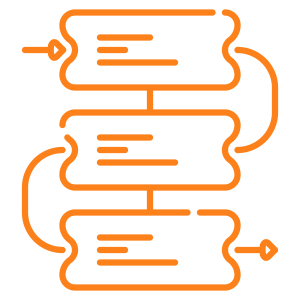Alert Triage: The Cornerstone of Effective
Security Operations
You’ve gone through the process of finding which alerts even matter – weeding out false positives. You’ve considered your security policies and ‘crown jewel’ priorities. You’ve factored in threat intelligence.
Next, you’ve used correlation and contextual tooling to give you a strong understanding of each alert. Now comes alert triage – the tough work of prioritizing alerts into ordered case management.
The work required to triage alerts never ends for security teams – regardless of size or skill. It is a constant game of balancing limited resources with a continuous flow of ‘incoming’. Just like an emergency room, the only logical approach is alert triage.
What is Alert Triage?
Simply put, SOC alert triage is the process of reviewing, analyzing, and grouping alerts based on their potential impact and urgency. This process allows security teams to prioritize effort where they can maximize business risk reduction against a constant barrage of alerts.
There is a process behind the scenes that makes it all possible. That process becomes faster and more accurate with the right kind of detection and response platform.
The Alert Triage Process
The alert triage process is designed to ensure that limited security operations personnel focus where most effective – preventing minor issues from becoming major incidents.
 Collection involves gathering alerts from various security tools. With attacker sophistication on the rise, data from network, endpoint, and identity sources is vital.
Collection involves gathering alerts from various security tools. With attacker sophistication on the rise, data from network, endpoint, and identity sources is vital.
 Investigation includes analysts examining each alert in detail, seeking to understand its context and significance.
Investigation includes analysts examining each alert in detail, seeking to understand its context and significance.
 Categorization based on severity and potential impact. The most critical alerts are escalated for immediate attention, while less urgent issues are scheduled for later review.
Categorization based on severity and potential impact. The most critical alerts are escalated for immediate attention, while less urgent issues are scheduled for later review.
Challenges With Security Alert Triage
Ideally, a security team has perfect information before alert triage is performed. Perfect information might be defined as:
- We are receiving the full corpus of alerts on all network, endpoint and identity activity
- We have automatically separated the ‘wheat from the chaff’ which reduces the alert pile and alert fatigue
- We have correlated and contextualized the remaining alerts so we have maximum technical understanding of the conditions around each alert
Many organizations struggle to address these needs, making triage a near impossibility. We’ve shown in other content how ThreatWarrior XDR speeds, streamlines and cost reduces each of these process steps.
But we still need to know two more things:
- Each alert’s severity
- Each alert’s potential impact if left unattended
Collecting the correct alert information and arranging it in the right order for people to notice requires time and skill. It is a process that cannot be rushed. The information needs to be carefully selected and organized in a way that is easily understandable. This ensures security staff can quickly and effectively respond to the alerts.
This is where Extended Detection and Response (XDR) comes into play.
ThreatWarrior Extended Detection and Response (XDR) and Alert Triage
ThreatWarrior XDR automatically collects and correlates data across multiple security layers – endpoints, network, and cloud. Using unsupervised neural networking and other technologies, it filters out the alert noise floor, and enriches remaining alerts with contextual network, endpoint and identity data. From here, alert triage becomes a far more automated and intelligence-driven effort, saving valuable time and energy for security staff:
Unified Visibility
ThreatWarrior XDR provides a holistic view of the entire IT environment, allowing for more accurate and efficient alert triage.
Automated Triage Process
By automating parts of the alert triage process, ThreatWarrior XDR saves valuable time for security teams, freeing them to focus on the most critical threats.
Advanced Analytics
ThreatWarrior XDR employs sophisticated algorithms to identify patterns and relationships across diverse datasets, helping analysts identify and prioritize true threats.
Threat Contextualization
By providing rich context for each alert, ThreatWarrior XDR helps analysts understand the potential impact and urgency, enabling faster and more effective response.
Through these capabilities, ThreatWarrior XDR offers a tangible solution to the challenges of alert triage, transforming a daunting task into a manageable one. By freeing your team from the noise, you can focus on what matters most: defending your cyber realm.